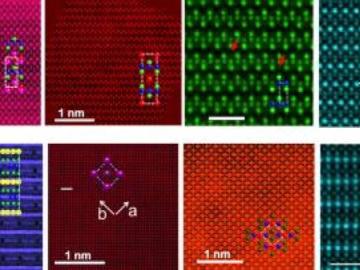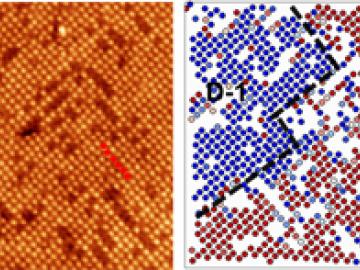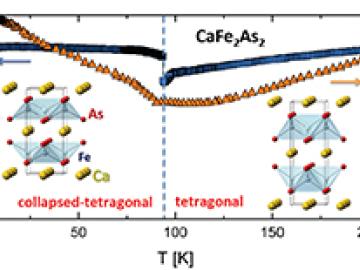Filter News
Area of Research
- (-) Biology and Soft Matter (5)
- (-) Fusion and Fission (54)
- (-) Materials (433)
- Advanced Manufacturing (34)
- Biological Systems (18)
- Biology and Environment (177)
- Building Technologies (12)
- Chemical and Engineering Materials (4)
- Chemistry and Physics at Interfaces (11)
- Clean Energy (522)
- Climate and Environmental Systems (14)
- Computational Biology (6)
- Computational Chemistry (5)
- Computational Engineering (5)
- Computer Science (19)
- Data (1)
- Earth Sciences (1)
- Electricity and Smart Grid (3)
- Energy Frontier Research Centers (14)
- Energy Sciences (5)
- Fossil Energy (3)
- Fuel Cycle Science and Technology (3)
- Functional Materials for Energy (16)
- Fusion Energy (17)
- Geographic Information Science and Technology (3)
- Isotope Development and Production (3)
- Isotopes (35)
- Materials Characterization (2)
- Materials for Computing (36)
- Materials Synthesis from Atoms to Systems (13)
- Materials Under Extremes (12)
- Mathematics (1)
- National Security (79)
- Neutron Data Analysis and Visualization (4)
- Neutron Science (190)
- Nuclear Science and Technology (74)
- Nuclear Systems Modeling, Simulation and Validation (3)
- Nuclear Systems Technology (1)
- Quantum Condensed Matter (4)
- Quantum information Science (9)
- Reactor Technology (1)
- Renewable Energy (4)
- Sensors and Controls (5)
- Supercomputing (311)
- Transportation Systems (11)
News Type
News Topics
- 3-D Printing/Advanced Manufacturing (26)
- Advanced Reactors (10)
- Artificial Intelligence (10)
- Big Data (2)
- Bioenergy (11)
- Biology (5)
- Biomedical (8)
- Buildings (5)
- Chemical Sciences (35)
- Clean Water (3)
- Climate Change (6)
- Composites (9)
- Computer Science (19)
- Coronavirus (4)
- Critical Materials (13)
- Cybersecurity (4)
- Decarbonization (10)
- Energy Storage (35)
- Environment (18)
- Exascale Computing (3)
- Fossil Energy (1)
- Frontier (4)
- Fusion (27)
- Grid (6)
- High-Performance Computing (6)
- Irradiation (1)
- Isotopes (14)
- ITER (6)
- Machine Learning (5)
- Materials (74)
- Materials Science (80)
- Mathematics (1)
- Microscopy (27)
- Molten Salt (3)
- Nanotechnology (39)
- National Security (3)
- Net Zero (2)
- Neutron Science (34)
- Nuclear Energy (42)
- Partnerships (13)
- Physics (30)
- Polymers (17)
- Quantum Computing (3)
- Quantum Science (11)
- Renewable Energy (1)
- Security (4)
- Simulation (4)
- Space Exploration (3)
- Summit (2)
- Sustainable Energy (17)
- Transformational Challenge Reactor (3)
- Transportation (16)
Media Contacts


Five Department of Energy Oak Ridge National Laboratory physicists, including Deputy for Science and Technology Ramamoorthy Ramesh, have been named by Thomson Reuters as some of the best and brightest of our time.




The Department of Energy’s Oak Ridge National Laboratory has launched the Institute for Functional Imaging of Materials to accelerate discovery, design and deployment of new materials.

Oak Ridge National Laboratory will be home to two Energy Frontier Research Centers (EFRCs) announced this week by U.S. Energy Secretary Ernest Moniz.

The American Conference on Neutron Scattering returned to Knoxville this week, 12 years after its inaugural meeting there in 2002.

A simple new technique to form interlocking beads of water in ambient conditions could prove valuable for applications in biological sensing, membrane research and harvesting water from fog.





